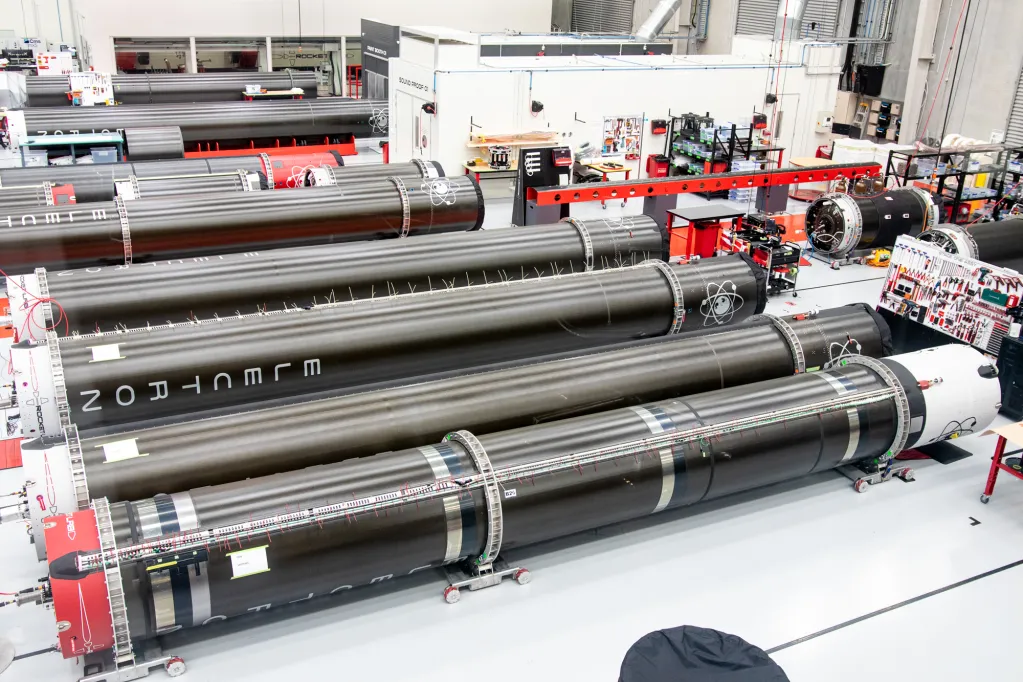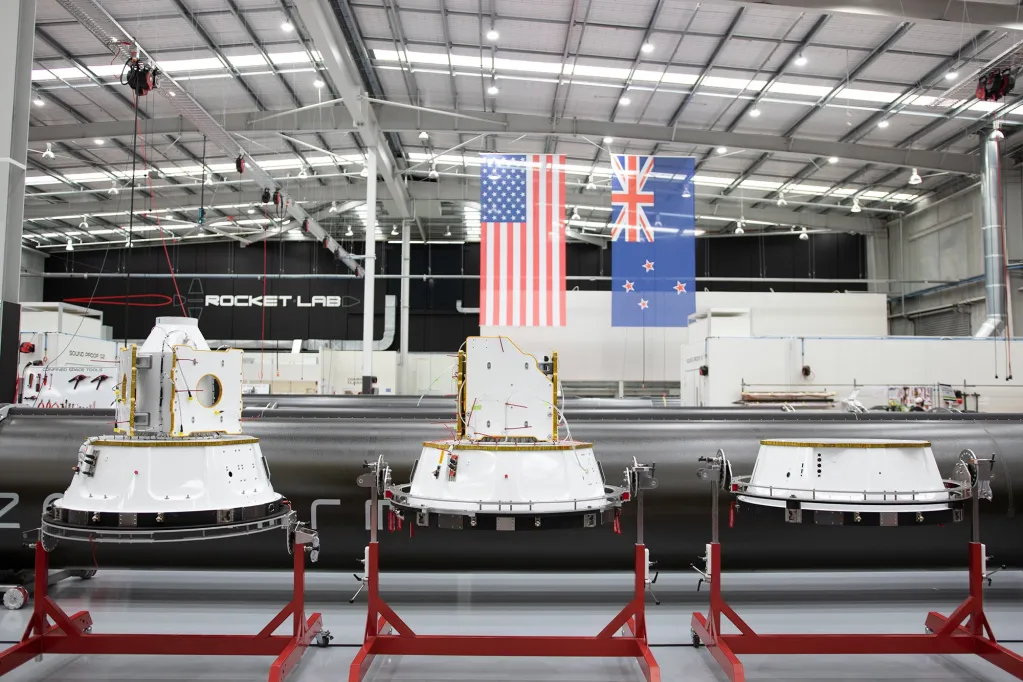Featured image credit: Rocket Lab
Lift Off Time | October 07, 2022 – 17:09 UTC October 08, 2022 – 06:09 NZDT |
|---|---|
Mission Name | It Argos Up From Here, a single GAzelle satellite for General Atomics |
Launch Provider | Rocket Lab |
Customer | General Atomics |
Rocket | Electron |
Launch Location | Launch Complex-1B, Māhia Peninsula, New Zealand |
Payload mass | Up to ~180 kg (~397 Ib) |
Where is the satellite going? | 750 km Sun-synchronous orbit (SSO) at 98° inclination |
Will they be attempting to recover the first stage? | No, not on this mission |
Where will the first stage land? | It will crash in the Pacific Ocean |
Will they be attempting to recover the fairings? | No |
Are these fairings new? | Yes |
This will be the: | – 1st Rocket Lab’s mission for General Atomics – 8th Rocket Lab launch of 2022 – 4th launch from Launch Complex-1B, Māhia Peninsula, New Zealand – 31st Electron launch – 133rd orbital launch attempt of 2022 |
Where to watch | Official livestream |
What Does All This Mean?
It Argos Up From Here is the 31st launch of Rocket Lab’s small satellite launch vehicle, Electron. The mission is scheduled to take off on October 07, 2022 from Launch Complex-1B, Māhia Peninsula, New Zealand and marks the first partnership between Rocket Lab and General Atomics. General Atomics’ GAzelle satellite is carrying the Argos-4 payload as part of the international Argos program.

It Argos Up From Here Mission
It Argos Up From Here is a dedicated launch for General Atomics and its GAzelle satellite bus. General Atomics is launching the satellite as a Hosted Payload Solutions (HoPS) mission for the Argos Advanced Data Collection System (A-DCS). The contract was awarded to General Atomics Electromagnetic Systems (GM-EMS) by the United States Space Force, Space System Commands, on behalf of the National Oceanic and Atmospheric Administration (NOAA). The Argos-4 payload was provided by the French space agency CNES.
The GAzelle satellite will be controlled and operated by GA-EMS during its expected on-orbit lifespan of five years.
Argos Program
Originally created in 1978 by the French Space Agency CNES, NASA and the NOAA, the Argos program was intended as a scientific tool to gather and relay oceanographic and meteorological data around the world. Today, the Argos Program is managed and serviced by CLS (Collecte Localisation satellite), providing 24/7 service to its customers, developing state-of-the-art processing tools, as well as providing satellite-based solutions for gathering environmental data collection.
Today, CNES, NOAA, EUMETSAT (European operational satellite agency for monitoring wather, climate and the environment), and ISRO (Indian Space Research Organisation) are actively participating in the Argos system providing the following applications:
- Wildlife monitoring
- Oceanography
- Climatology
- Marine fisheries
- Maritime security
- Monitoring pollution and eequipment safety at sea
- Humanitarian aid
- Integrated global Earth observations
Payloads
Next to Argos-4 is the RadMon experiment, which, as the name suggests, is a radiation monitoring experiment that will monitor and measure space radiation.
Once on orbit, Argos-4 will join a network of multiple Argos instruments located in Sun-synchronous orbits. Argos-4’s main purpose is collecting and relaying data from mobile and stationary transmitters around the globe. This data will help improve our understanding of Earth’s physical and biological envirnonment, including weather and climate, assist with maritime security, humanitarian assistance, offshore pollution, as well as biodiversity and ecosystems.

GAzelle
Not much is known about General Atomics’ GAzelle, other than it is a small satellite bus designed to host multiple scientific payloads and experiments providing power, communications, attitude control and propulsion, with a nominal operational lifespan of five years.
Timeline
Pre-Launch
| Hrs:Min:Sec From Lift-Off | Events |
| – 04:00:00 | Road to the launch site is closed |
| – 04:00:00 | Electron is raised vertical, fueling begins |
| – 02:30:00 | Launch pad is cleared |
| – 02:00:00 | LOx load begins |
| – 02:00:00 | Safety zones are activated for designated marine space |
| – 00:30:00 | Safety zones are activated for designated airspace |
| – 00:18:00 | GO/NO GO poll |
| – 00:02:00 | Launch auto sequence begins |
Launch
| Hrs:Min:Sec From Lift-Off | Events |
| – 00:00:02 | Rutherford engine ignition |
| 00:00:00 | Lift-Off |
| + 00:00:56 | Vehicle supersonic |
| + 00:01:08 | Max-Q |
| + 00:02:23 | Main Engine Cut-Off (MECO) on Electron’s first stage |
| + 00:02:26 | Stage 1 separation |
| + 00:02:29 | Stage 2 Rutherford engine ignition |
| + 00:02:57 | Fairing separation |
| + 00:06:11 | Battery hot-swap |
| + 00:09:08 | Second Engine Cut-Off (SECO) on Electron’s second stage |
| + 00:09:12 | Stage 2 separation from Kick Stage |
| + 00:51:26 | Kick Stage Curie engine ignition |
| + 00:53:58 | Curie engine Cut-Off |
| ~+ 00:54:58 | GAzelle (Argos-4) payload deployed |
What Is Electron?
Rocket Lab’s Electron is a small-lift launch vehicle designed and developed specifically to place small satellites (CubeSats, nano-, micro-, and mini-satellites) into LEO and Sun-synchronous orbits (SSO). Electron consists of two stages with optional third stages.
Electron is about 18.5 meters (60.7 feet) in height and only 1.2 meters (3.9 feet) in diameter. It is not only small in size, but also light-weighted. The vehicle structures are made of advanced carbon fiber composites, which yields an enhanced performance of the rocket. Electron’s payload lift capacity to LEO is 300 kg (~660 lbs).

The maiden flight It’s A Test was launched on May 25, 2017, from Rocket Lab’s Launch Complex-1 (LC-1) in New Zealand. On this mission, a failure in the ground communication system occurred, which resulted in the loss of telemetry. Even though the company had to manually terminate the flight, there was no larger issue with the vehicle itself. Since then, Electron has flown a total of 30 times (27 of them were fully successful) and delivered 150 satellites into orbit.
First And Second Stage
| First Stage | Second Stage | |
|---|---|---|
| Engine | 9 Rutherford engines | 1 vacuum optimized Rutherford engine |
| Thrust Per Engine | 24 kN (5,600 lbf) | 25.8 kN (5,800 lbf) |
| Specific Impulse (ISP) | 311 s | 343 s |
Electron’s first stage is composed of linerless common bulkhead tanks for propellant, and an interstage, and powered by nine sea-level Rutherford engines. The second stage also consists of tanks for propellant (~2,000 kg of propellant) and is powered by a single vacuum optimized Rutherford engine. The main difference between these two variations of the Rutherford engine is that the latter has an expanded nozzle that results in improved performance in near-vacuum conditions.
For the Love At First Insight mission, the company introduced an update to the second stage by stretching it by 0.5 m. Moreover, they flew an Autonomous Flight Termination System (AFTS) for the first time.
Rutherford Engine
Rutherford engines are the main propulsion source for Electron and were designed in-house, specifically for this vehicle. They are running on rocket-grade kerosene (RP-1) and liquid oxygen (LOx). There are at least two things about the Rutherford engine that make it stand out.

Firstly, all primary components of Rutherford engines are 3D printed. Main propellant valves, injector pumps, and engine chamber are all produced by electron beam melting (EBM), which is one of the variations of 3D printing. This manufacturing method is cost-effective and time-efficient, as it allows to fabricate a full engine in only 24 hours.
Rutherford is the first RP-1/LOx engine that uses electric motors and high-performance lithium polymer batteries to power its propellant pumps. These pumps are crucial components of the engine as they feed the propellants into the combustion chamber, where they ignite and produce thrust. However, the process of transporting liquid fuel and oxidizer into the chamber is not trivial. In a typical gas generator cycle engine, it requires additional fuel and complex turbomachinery just to drive those pumps. Rocket Lab decided to use battery technology instead, which allowed eliminating a lot of extra hardware without compromising the performance.
Different Third Stages
Kick Stage
Electron has optional third stages, also known as the Kick Stage, Photon, and deep-space version of Photon. The Kick Stage is powered by a single Curie engine that can produce 120 N of thrust. Like Rutherford, it was designed in-house and is fabricated by 3D printing. Apart from the engine, the Kick Stage consists of carbon composite tanks for propellant storage and 6 reaction control thrusters.

The Kick Stage in its standard configuration serves as in-space propulsion to deploy Rocket Lab’s customers’ payloads to their designated orbits. It has re-light capability, which means that the engine can re-ignite several times to send multiple payloads into different individual orbits. A recent example includes Electron 19th mission, They Go Up So Fast, launched in in 2021. The Curie engine was ignited to circularize the orbit, before deploying a payload to 550 km. Curie then re-lighted to lower the altitude to 450 km, and the remaining payloads were successfully deployed.
Photon And Deep-space Photon
Rocket Lab offers an advanced configuration of the Kick Stage, its Photon satellite bus. Photon can accommodate various payloads and function as a separate operational spacecraft supporting long-term missions. Among the features that it can provide to satellites are power, avionics, propulsion, and communications.

But there is more to it. Photon also comes as a deep-space version that will carry interplanetary missions. It is powered by a HyperCurie engine, an evolution of the Curie engine. The HyperCurie engine is electric pump-fed, so it can use solar cells to charge up the batteries in between burns. It has an extended nozzle to be more efficient than the standard Curie, and runs on some “green hypergolic fuel” that Rocket Lab has not yet disclosed.



